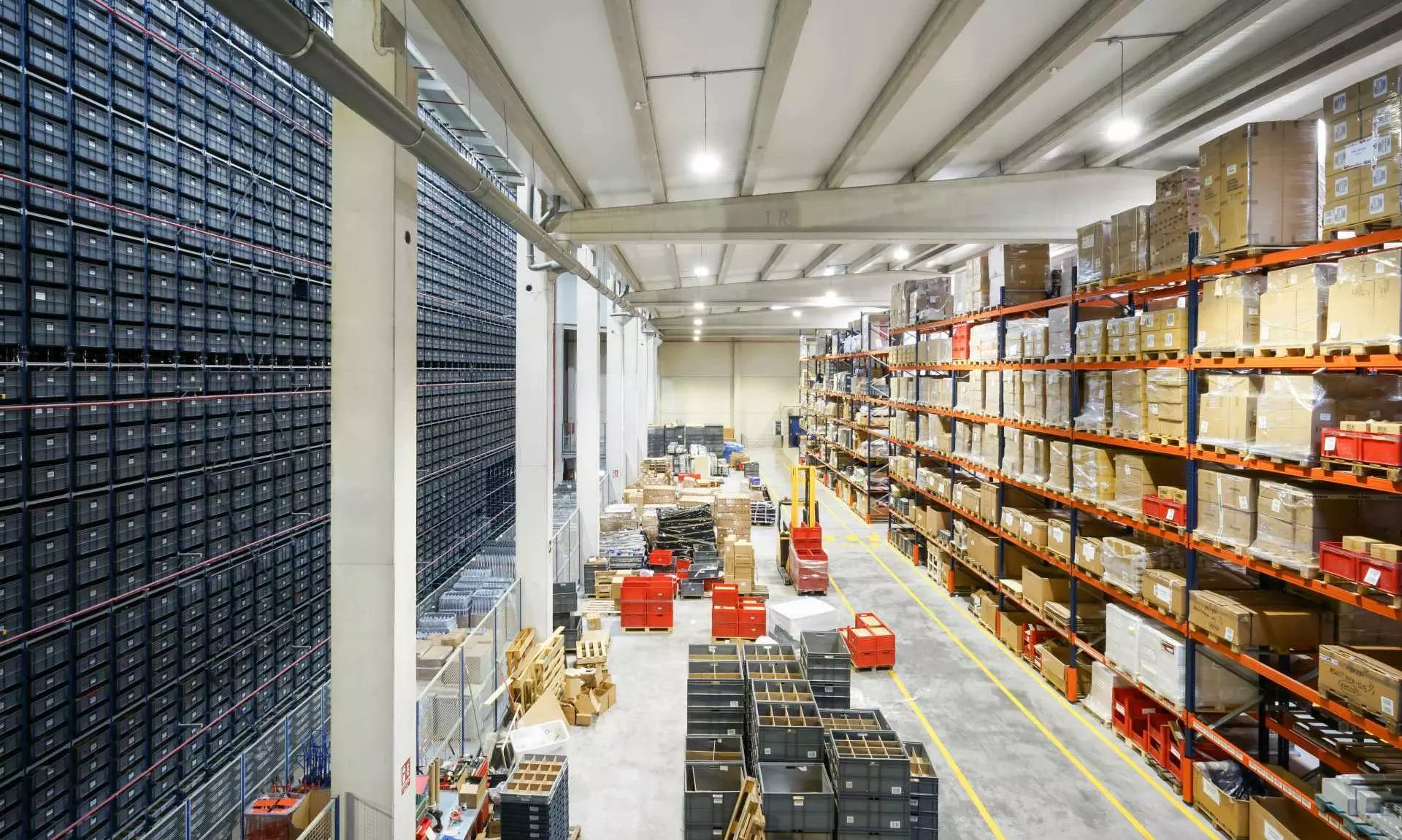Indian industrial & warehousing sector absorbs 49 mn sq ft in 2023
3PL and manufacturing sectors together account for 66 percent of the total absorption witnessed in 2023.

The industrial and logistics sector witnessed absorption of 49 mn sq ft in 2023 indicating a 6.7 percent increase compared to the 46.3 mn sq. ft. absorption in 2022.
Notably, tier I cities witnessed 75 percent of the absorption while tier II and III cities accounted for the remaining 25 percent according to International real estate advisory firm, Savills India.
“Tier II and III cities are growing significantly as sourcing hubs, aiding efficient distribution. The absorption is being led by a surge in demand from the manufacturing and retail sectors, as well as continued sustained demand from the 3PL sector,” reads the release.
The report suggests that the sector witnessed a fresh supply of 62 mn sq. ft. in 2023 of which 46.2 mn sq. ft. (75 percent) was from tier I cities and 15.8 mn sq. ft. (25 percent) from tier II and III cities. The surge in supply was due to the delivery of projects across the cities by major developers in response to growing demand.
The overall Grade A space accounted for 53 percent of the supply in 2023 up from 48 percent in 2022, while overall Grade A absorption accounted for 54 percent in 2023 up from 42 percent in 2022, indicating a significant increase in the supply and demand for graded and compliant buildings.
“Fueled by rising domestic demand and expanding distribution networks in tier II and III cities, the industrial and logistics sector is on a growth path. We anticipate an absorption of over 56 mn sq. ft. in 2024, with a projected growth rate exceeding 13 percent, and a supply surpassing 71 mn sq. ft. in 2024, with a growth rate exceeding 14 percent. The 3PL sector is expected to play a pivotal role, contributing over 40 percent to total absorption. The surge in supply chain outsourcing, coupled with increased manufacturing activity driven by government initiatives such as, Make in India and the PLI scheme, positions the manufacturing sector for robust leasing demand, with a projected contribution of over 30 percent to total absorption in 2024.” - Srinivas N, managing director, industrial and logistics, Savills India.
The manufacturing sector has gained momentum due to increased activity, supported by various incentive schemes including the Production Linked Incentive Scheme (PLI). The PLI scheme in India encourages domestic manufacturing through financial incentives tied to increased local sales. As a result, the manufacturing sector’s contribution to overall absorption has experienced impressive growth, increasing from 16 percent of total absorption in 2022 to 27 percent in 2023. This trend is likely to continue, with a projected contribution in excess of 30 percent to the total absorption in the next two years.
The 3PL sector leads this sector accounting for 39 percent contribution to total absorption in 2023. The contribution of the retail sector was 14 percent, while FMCD/FMCG accounted for 6 percent. The other sectors including cold storage, chemical storage, FTWZs, ICDs, and Urban Warehousing contribution was around 10 percent.
In 2023, Delhi-NCR remained at the top with the highest contribution of 22 percent to total supply, closely followed by Mumbai and Pune with 11 percent each. Bengaluru and Chennai witnessed a contribution of 10 percent and 9 percent, respectively to total supply and tier II and tier III cities together accounted for 22 percent of the total supply. In terms of absorption, Delhi-NCR accounted for the highest contribution of 15 percent in 2023, followed by Mumbai at 14 percent, and Bengaluru and Pune, each at 12 percent.
In 2023, the market witnessed the acquisition of in excess of 1,950 acres of private land by manufacturing and warehousing players across the country.
India’s warehousing revolution was orchestrated by the e-commerce industry; this segment has transformed the warehousing sector from a basic backend storage facility into a versatile and cutting-edge modern complex by prioritizing & enhancing operational efficiency including large investments into Robotics, Sortation, WMS services and upgraded racking & shelving systems. The e-Commerce sector is adopting new business models, driving exponential growth in cities like Patna, Ranchi, Lucknow, Guwahati, Rajpura, Ambala and beyond amplifying their urban distribution and extending their reach to tier II & III cities. We expect e-Commerce sector contribution is set to surpass 12 to 15 million sq. ft. between 2025 and 2030 with a significant portion originating from tier II & III cities.
The changing occupier preferences to meet ESG (Environmental, Social, and Governance) standards are likely to drive demand for Grade A warehousing and ready-fitted-out factory space. Over the last 2-3 years, Grade A space has contributed to more than 40 percent of the total absorption and is likely to witness a substantial surge in the future.
Rental values are expected to increase marginally across the cities for compliant buildings in 2024. The magnitude of growth will be in the range of 2 percent to 6 percent depending on the location and city.



